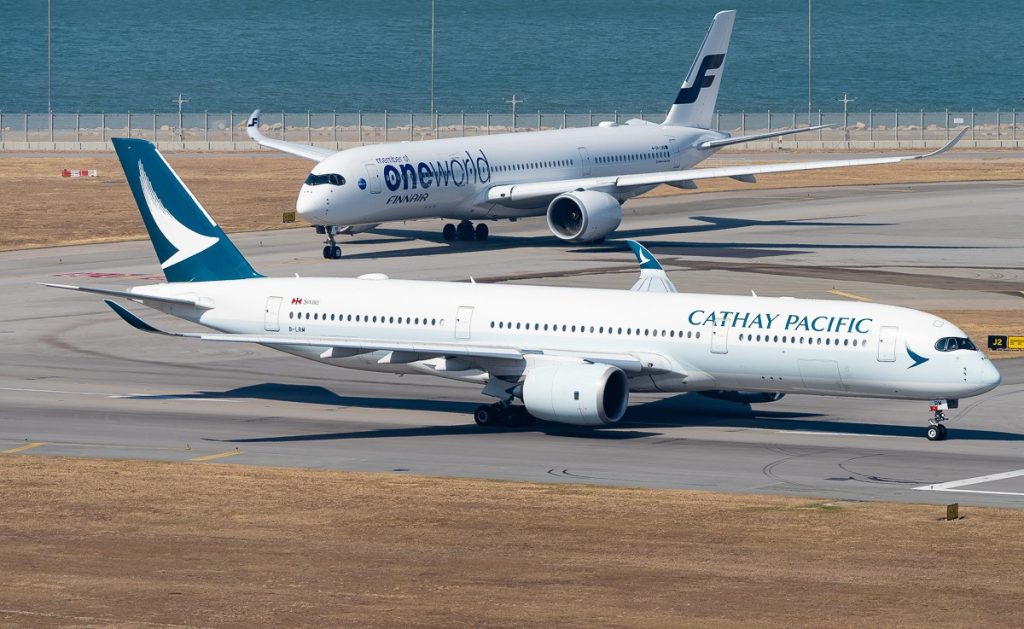Mohamed Al Fayed accused of multiple rapes by staff
3 min read

A recent incident involving a Cathay Pacific Airbus A350 has raised significant safety concerns after an engine fire was linked to a fuel leak caused by a damaged hose. The event occurred shortly after takeoff from Hong Kong, when the aircraft, bound for Zurich, experienced an “engine component failure,” prompting an immediate return to Hong Kong.
The affected aircraft was powered by a Trent XWB-97 engine, manufactured by Rolls-Royce. A preliminary report from Hong Kong’s Air Accident Investigation Authority (AAIA) indicated that a ruptured fuel hose, part of a series of damaged hoses, was the primary cause of the incident. Following the warning of a fire in the cockpit, the pilots successfully shut down the engine and deployed fire extinguishers. Fortunately, all 348 passengers and crew members onboard were unharmed, and the aircraft landed safely.
The AAIA’s report revealed alarming details about the engine’s condition, including a discernible hole in the protective surround of the fuel hose and evidence of fire damage, such as soot and burn marks. Further inspections uncovered that five additional fuel hoses within the same engine were also defective. The report emphasized that had the issue not been swiftly identified, it could have escalated into a more severe engine fire, potentially leading to extensive damage to the aircraft.
In light of these findings, the AAIA urged the European Union Aviation Safety Agency (EASA) to impose new inspection requirements for the Trent XWB engines. EASA promptly responded by mandating inspections of fuel pipes on all aircraft using the same engine type, removing any that were deemed “potentially compromised.” Subsequently, EASA expanded the inspection protocol to cover various Trent XWB variants after discovering that a specific cleaning process used during engine refurbishment could degrade fuel hoses.
Cathay Pacific has since taken proactive measures, initiating a comprehensive inspection of its entire A350 fleet, which confirmed that the aircraft could continue to operate safely. The airline assured compliance with EASA’s directives and expressed its commitment to collaborating with airframe and engine manufacturers, as well as regulators.
Cathay Pacific began operating the Airbus A350 in 2016, and the aircraft has become a key component of many airlines’ long-haul fleets worldwide, largely due to its efficiency and low operational costs. The Trent XWB engine, specifically designed for the A350, plays a crucial role in this efficiency.
Initially, there were widespread fears that this incident might signify a more profound issue affecting the global A350 fleet. Such a problem could have represented a significant setback for Rolls-Royce. However, it soon became clear that the malfunction pertained to external fuel lines rather than internal engine components, allowing for a relatively quick resolution without necessitating costly redesigns.
The issue was initially thought to be restricted to the high-powered XWB-97 variant of the engine, which is installed on a limited number of long-range aircraft. However, EASA’s requirements for inspections have since expanded to include other engine versions.
In response to the investigators’ report, Rolls-Royce stated that it remains committed to collaborating with regulatory bodies to support the ongoing investigation into the Cathay Pacific flight incident. The company highlighted that the aircraft’s systems were effective in promptly detecting and addressing the issue, which enabled the crew to respond quickly.
This year, Rolls-Royce announced significant investment plans aimed at enhancing its engine offerings, including the Trent XWB-97. Concerns about engine durability and maintenance costs were also raised by industry leaders, such as Tim Clark, president of Emirates, indicating that the incident has sparked broader discussions about engine reliability in the aviation sector.
As investigations continue and safety protocols are reinforced, both Cathay Pacific and Rolls-Royce remain focused on ensuring the safety and efficiency of their aircraft, underlining the importance of rigorous oversight in the aviation industry.